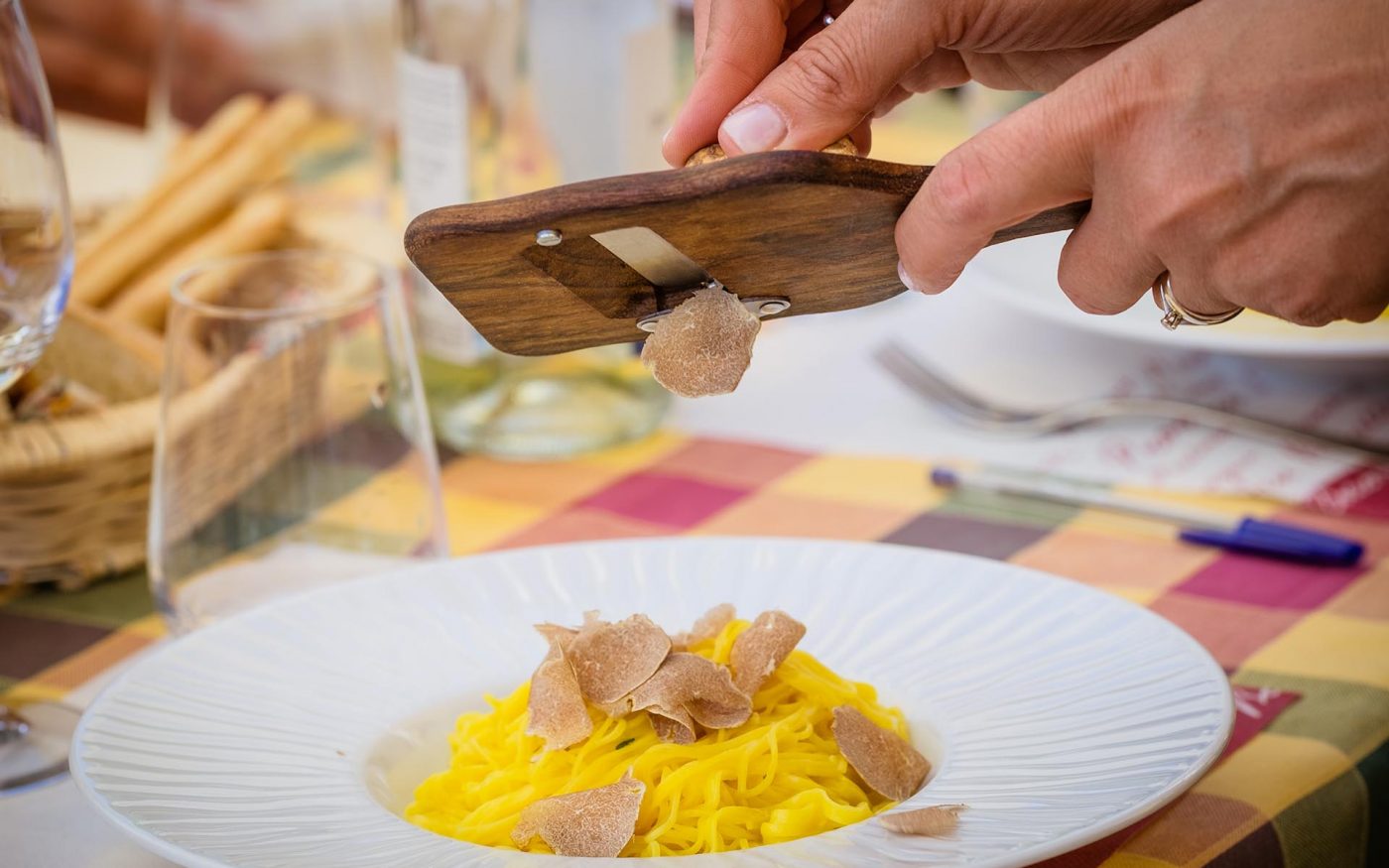Tasty reads
Cooking with truffles the "must" and "mustn't" for a correct use

Truffles are the kings of local cuisine, whose character is that of an autumn cuisine.
It has strong scents and intense tastes, that are easily matched with great wines.
And, over all, truffles: a season’s smell.
A kind of cooking that deeply involves all the senses, also thanks to the much talked about aphrodisiac vortues of this mushroom.
Truffles, those “cite pugnà ‘d bej seugn” (little handfuls of sweet dreams), are said to have been made to warm people up.
As we’ve explained in the article “Truffle and terroir: the Rocche of Roero“, the first approach is very similar with that of wine: sight, smell, taste.
An important difference between the two products, however, is in the touch, inevitable during the purchase of the mushroom.
A good truffle must be hard.
Compactness is the first sign of a fresh and high quality product.
The eye wants its part, and from the look it is possible to recognize its characteristics of development, although the appearance does not influence its taste in any way.
A smooth and round peridium is easily connected to a sandy soil, where growth has not been limited, while instead the characteristic warts take different shapes according to the obstacles encountered in the development (roots, boulders, or compact soils).
The scent of a good truffle must be sweet, without interference from other smells that can reduce its market value.
Bring it to the nose and perceive the classic earthy aroma, umami.

A grated truffle
In Alba it is traditionally eaten raw: cooking varies its taste and greatly reduces its aromas.
The main rule in cooking with truffles is that it must be the protagonist of the dish, not one of the many condiments.
Although during the fair the streets of Alba are full of its scent, which to many seems extremely strong, it is in fact a delicate ingredient, therefore not combinable with savory dishes.
Exquisite on warm food and with light sauces; ideal on fondue, on “tajarin” with butter and sage and “risotto alla piemontese“; superb on albese raw meat and on porcini mushrooms and royal ova salad.
The best way to fully perceive its characteristics is however grated on a fried egg, which accompanies it with its roundness, making it the main flavor.
We advise you not to combine it with spicy or sour dishes, but apart from that you can play with it.
Clearly, with such a value we tend to go on the safe options with traditional dishes, but for new and interesting tastes we suggest the combination with raw fish, the scallop for example, with thyme (the only spice able to enhance it) and with a good toma of Langa, not too aged.
